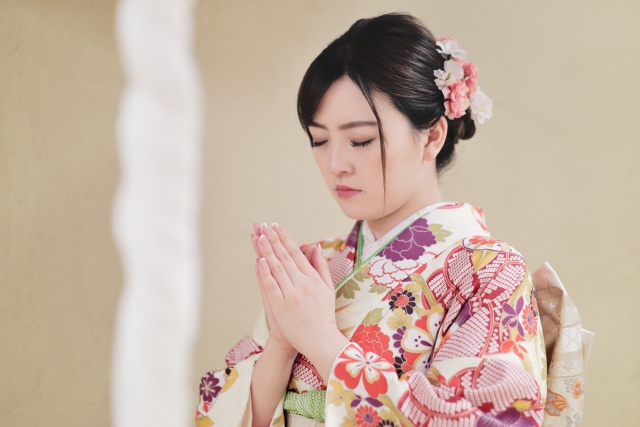
After leaving Shiroko, Suzuka City in Mie Prefecture, where Ise katagami is made, I took a train to Ise City, enjoying the beautiful view of the setting sun. It has been 25 years since I visited Ise City. This time I stayed at a place near Ise-shi Station, within walking distance to the outer shrine of Ise Jingu, Geku.
The next morning, just after 6:30 a.m., I went for a walk to Ise Jingu Geku. When l visited Ise city 25 years ago for the first time, l had just viewed it from out side of that place while having lunch at the restaurant in front of there.
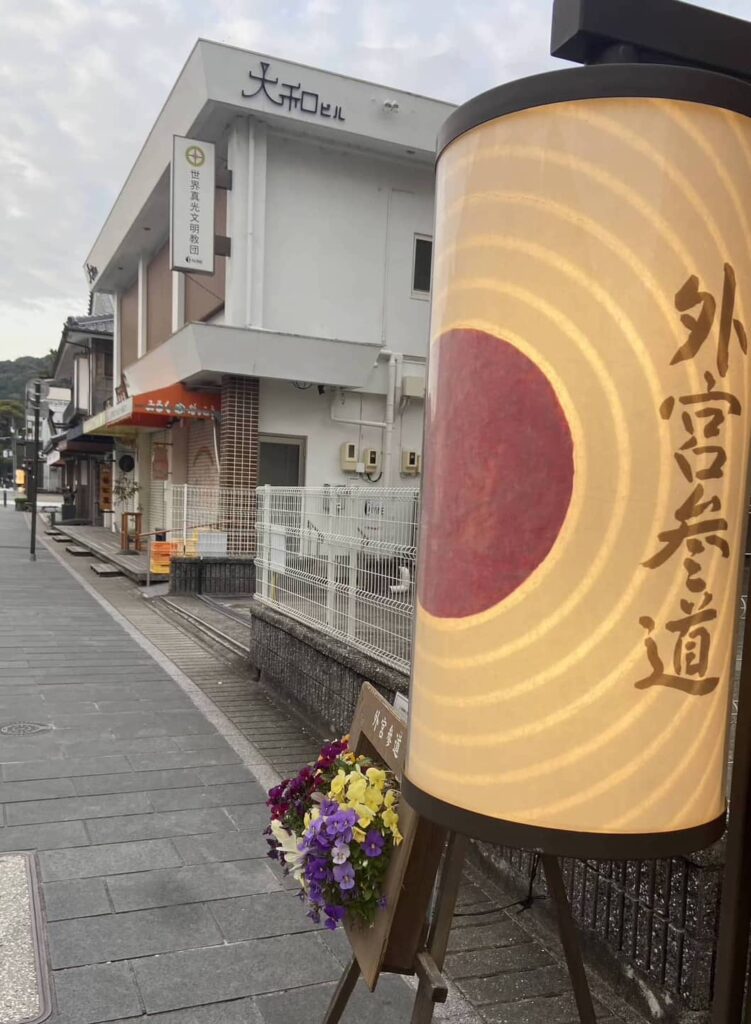
I decided to go there this time because I remembered an event experienced in Tokushima 13 years ago. In my mind, Ogetsuhime (Goddess of Food) matched Toyo’uke-no-Omikami (the food deity of Amaterasu-Omikami) at Ise Jingu Geku.
I am not at all familiar with Japanese mythology, so there may be objections from those who are more knowledgeable about it. Despite the various expressions of deity names, I believe they originate from the same source. The gods associated with food, clothing, and shelter seem to be shared between Ogetsu-hime and Toyo’uke-no-Omikami. It seems unnecessary for them to be divided into so many distinct deities.
When I went to Ise City to attend a workshop on Synecoculture (Kyo-sei No-ho), I felt it was inevitable that a shrine where a symbolic figure of food is enshrined is located nearby. I felt compelled to visit.
Ise Jingu is the top shrine in Japan. Amaterasu-Omikami and Toyo’uke-no-Omikami are enshrined there. Why is it that not only Amaterasu-Ominami but also the goddess of food is enshrined there?
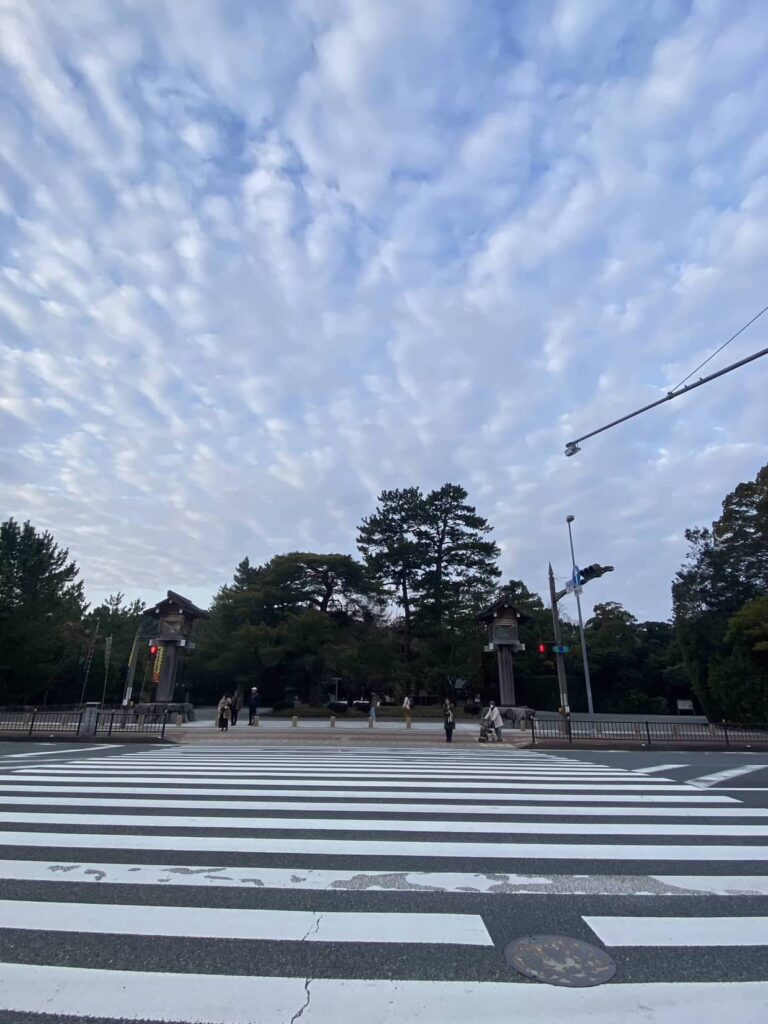
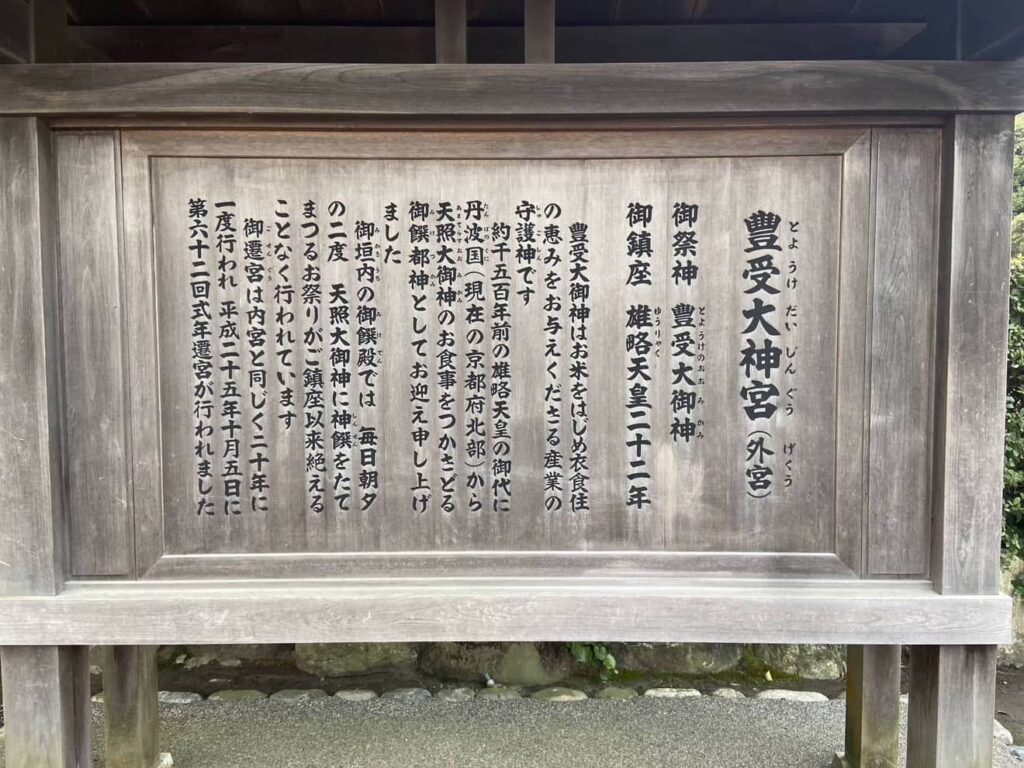
The sign at the entrance had the following statement
Toyo’uke-daijingu (Geku)
The deity Toyo’uke-no-Omikami
The shrine was built in the 22nd year of the reign of Emperor Yuryaku.
Toyo’uke-no-Omikami is a guardian deity of industry who provides us with rice and other blessings for food, clothing, and shelter.
She was introduced from the Land of Niwa (present-day northern Kyoto Prefecture) some 1,500 years ago during the reign of Emperor Yuryaku as the deity of the Imperial Court, the provider of sacred foods to Amaterasu.
Since the shrine’s foundation, a festival has been held twice a day, in the morning and evening, to offer foods to Amaterasu.
Like the Inner Shrine, the relocation of the shrine takes place once every 20 years, and the 62nd Shikinen Sengu (the series of rituals and ceremonies for relocation) was held on October 5, 2013.
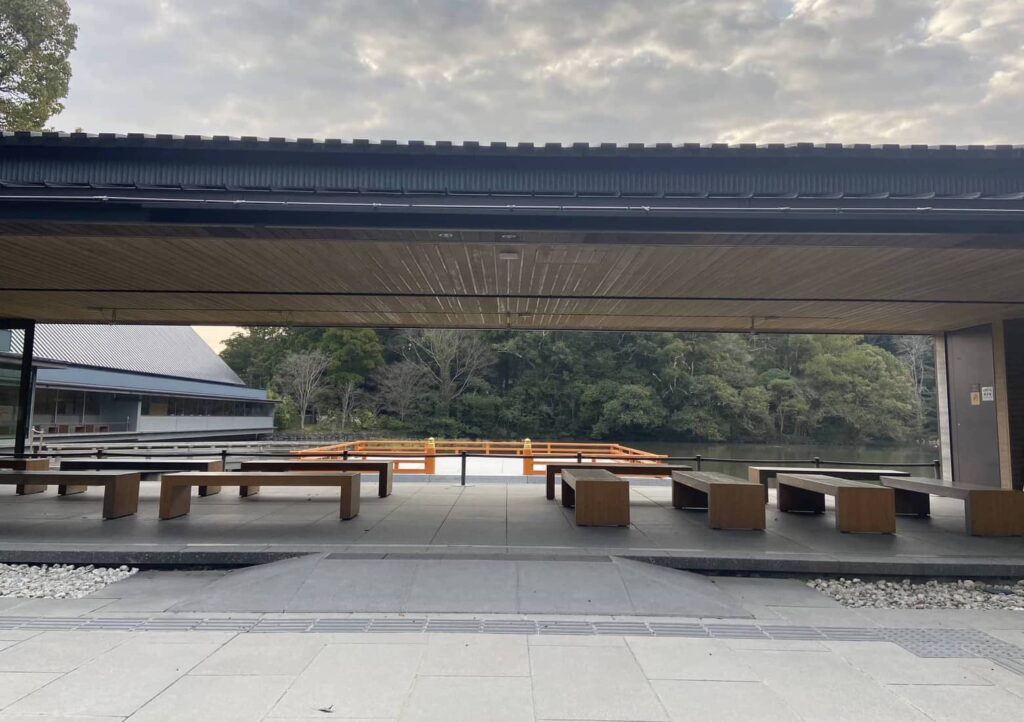
There was a rest area to the left of the entrance that looked out over the Magatama pond. What is happening on the dedication stage? It is a place to take a breath of fresh air in a dignified atmosphere.
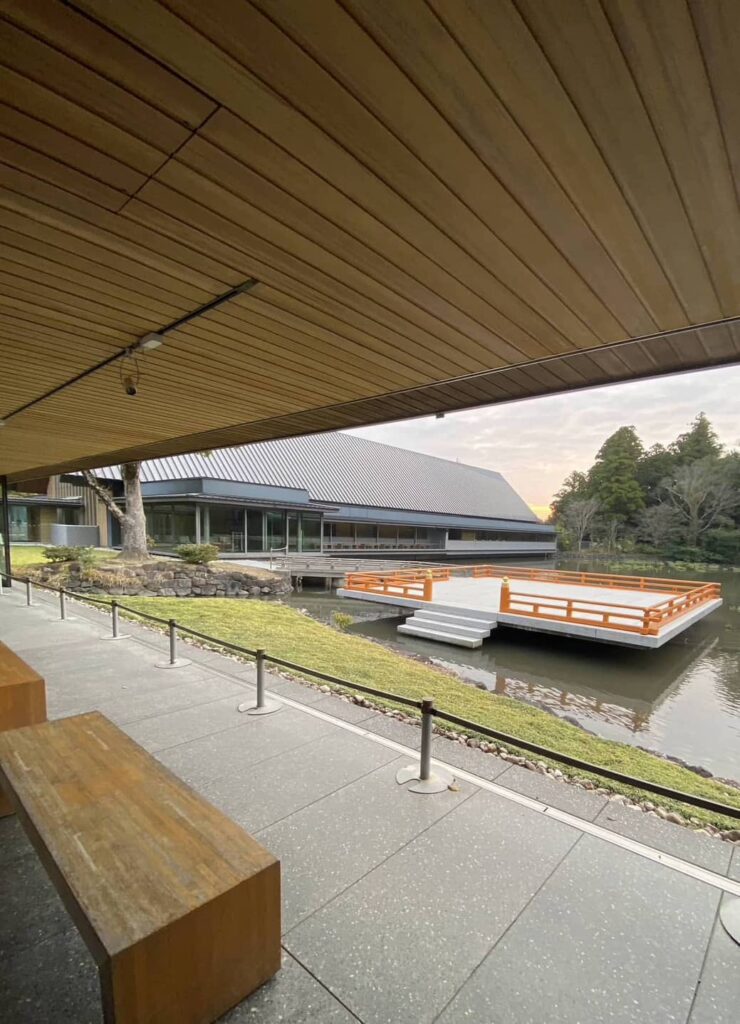
And next to it, there was a water purification room (chozu-ya, temizu-ya).
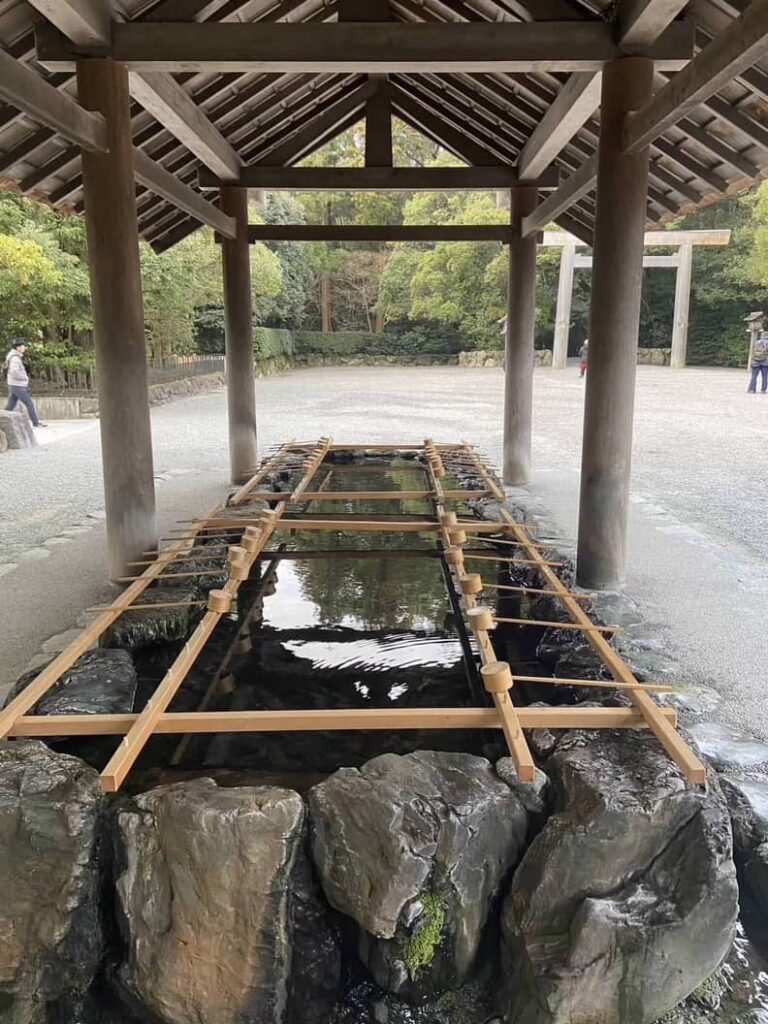
Wash your hands and mouth to purify yourself. What is the meaning of this custom of passing through the gate after washing one’s hands and mouth?
It is said that by cleansing the hands and rinsing the mouth, it is meant to wash and purify the mind (soul) as well.
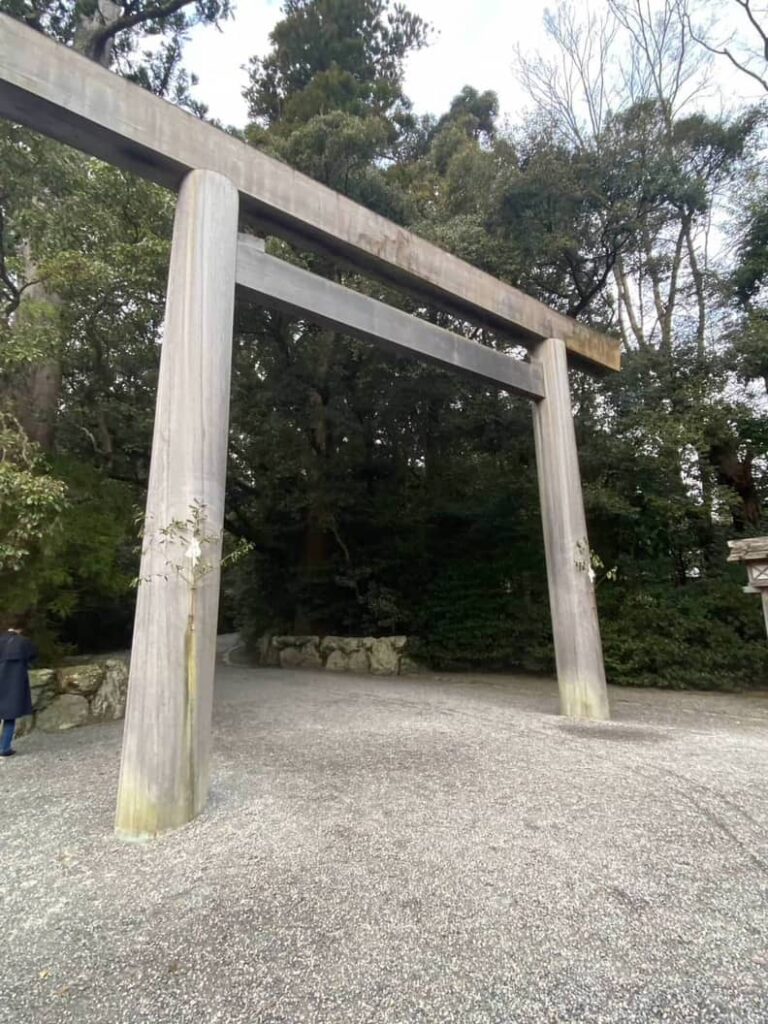
Everyone bowed upon entering and again upon returning. Such politeness reminded me once more of the distinctly Japanese atmosphere, now that I’ve temporarily returned to Japan.
After passing through the torii gate and proceeding down the main approach, I saw a signboard on my right.
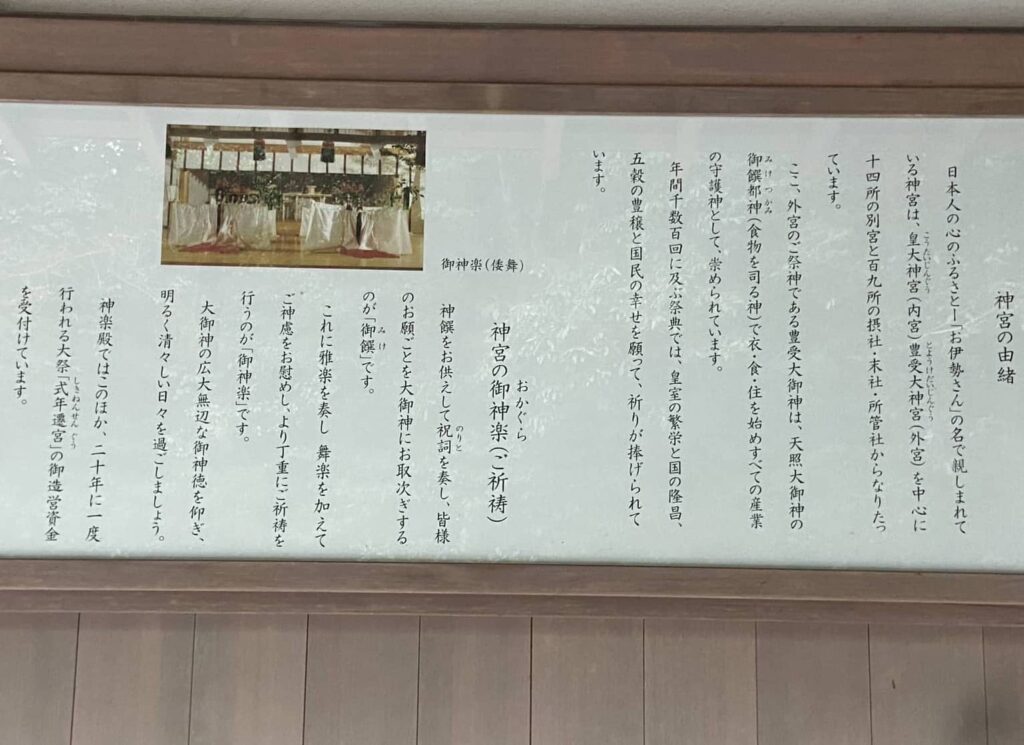
The History of Jingu
he Jingu Shrine, affectionately known as “Oise-san,” holds a significant place as the spiritual home of the Japanese people. It comprises Kotaijingu (Naiku), Toyo’ukedaijingu (Geku), as well as 14 other shrines and 109 auxiliary shrines, branch shrines, and related Shinto shrines.
Toyo’uke-no-Omikami, the deity of Geku, is worshipped as the deity of clothing, food, shelter, and the guardian deity of all industries.
At the festival, which is held more than a thousand times a year, prayers are offered for the prosperity of the imperial family, the prosperity of the nation, a bountiful harvest, and the happiness of the people.
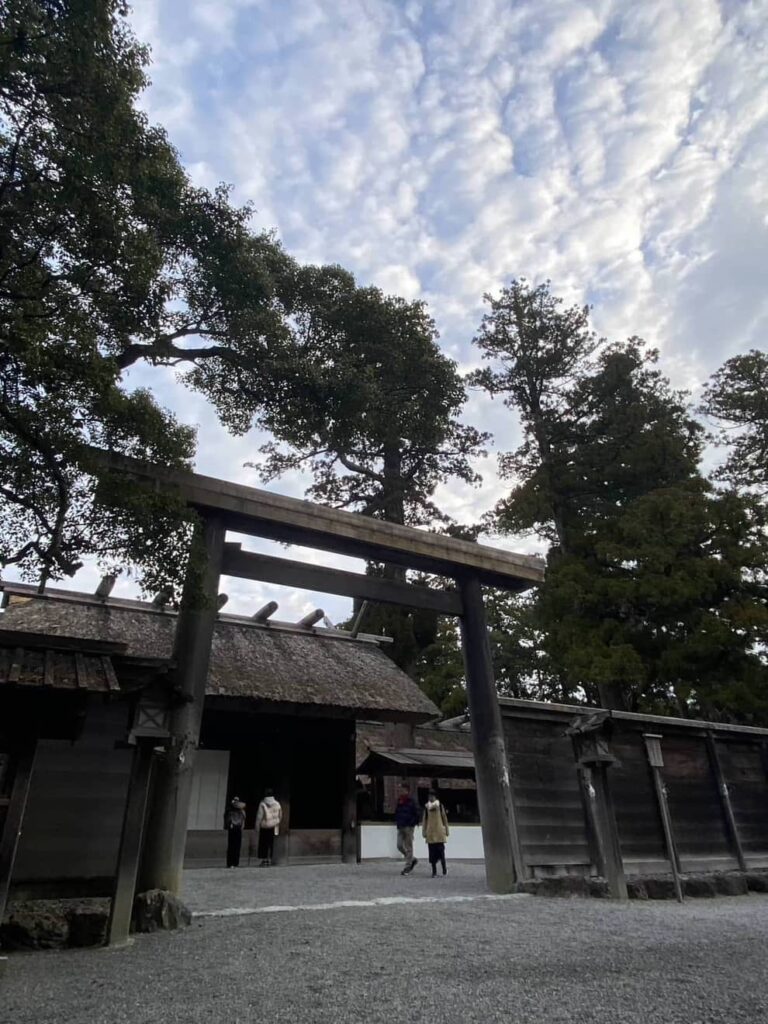
At the main shrine Shogu, everyone was praying. Photography is not allowed inside the gate, so this is a view from outside. I bowed from a distance and left.
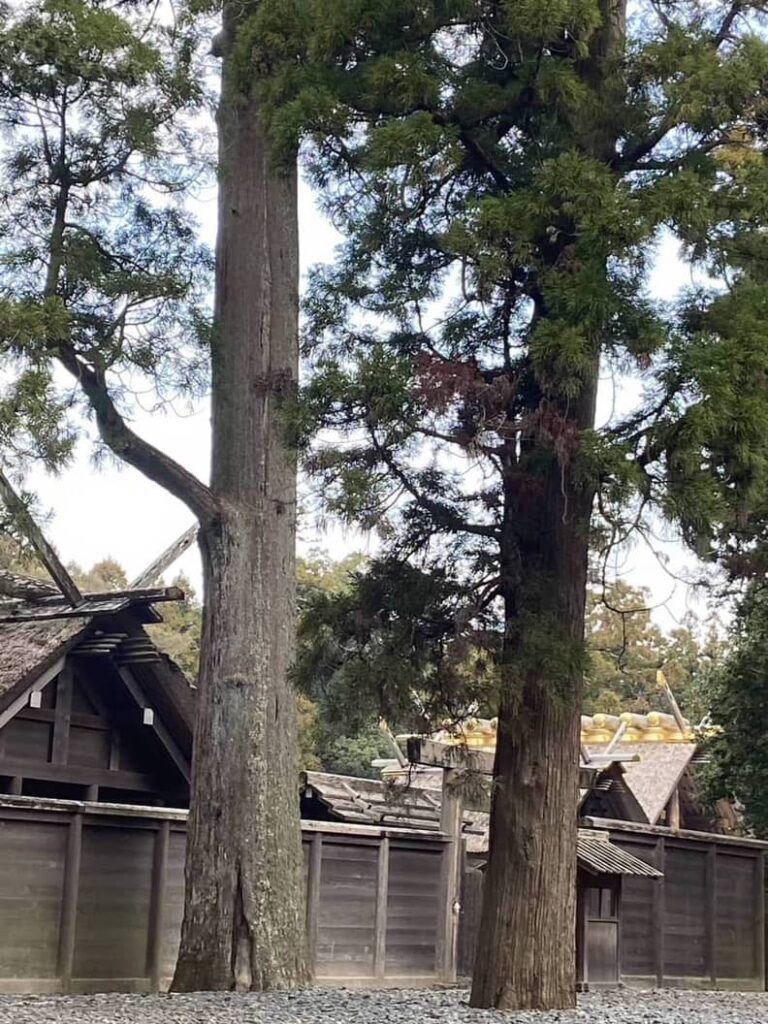
I’ve often pondered whether the benefits we receive are truly tied to our monetary offerings or other forms of offerings. It seems improbable that divine favor is contingent upon material offerings.
And Prayer is not performed by others but by oneself.

After the main shrine Shogu, l walked a short distance to the Kazenomiya and Tsuchinomiya. I climbed some more stairs to the Takanomiya on top of a small hill, and left Ise Jingu Geku.
Feeling cold and hungry, I thought porridge would be perfect for the situation, and I quickly spotted a restaurant on my left. A line of people was already forming, eagerly awaiting the restaurant’s opening. They offered a set menu of porridge.
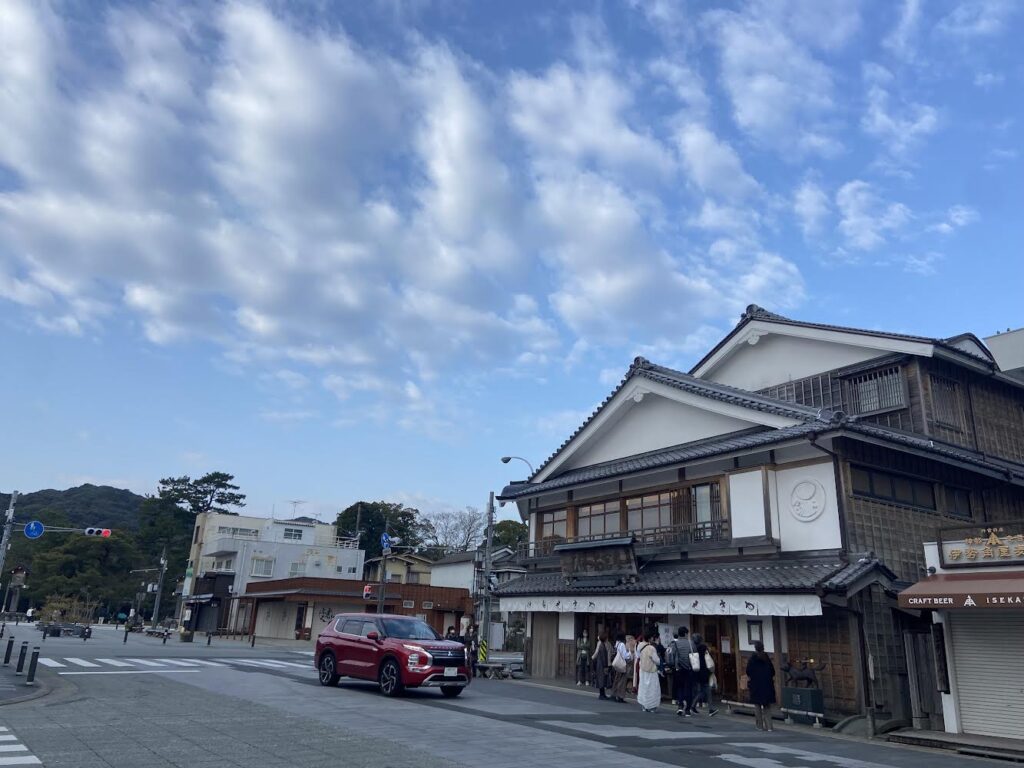
To get to Ise Jingu Shrine from Ise-shi Station, you will pass by the approach of Geku Sandou. The lanterns and lovely flowers along the street were impressive.
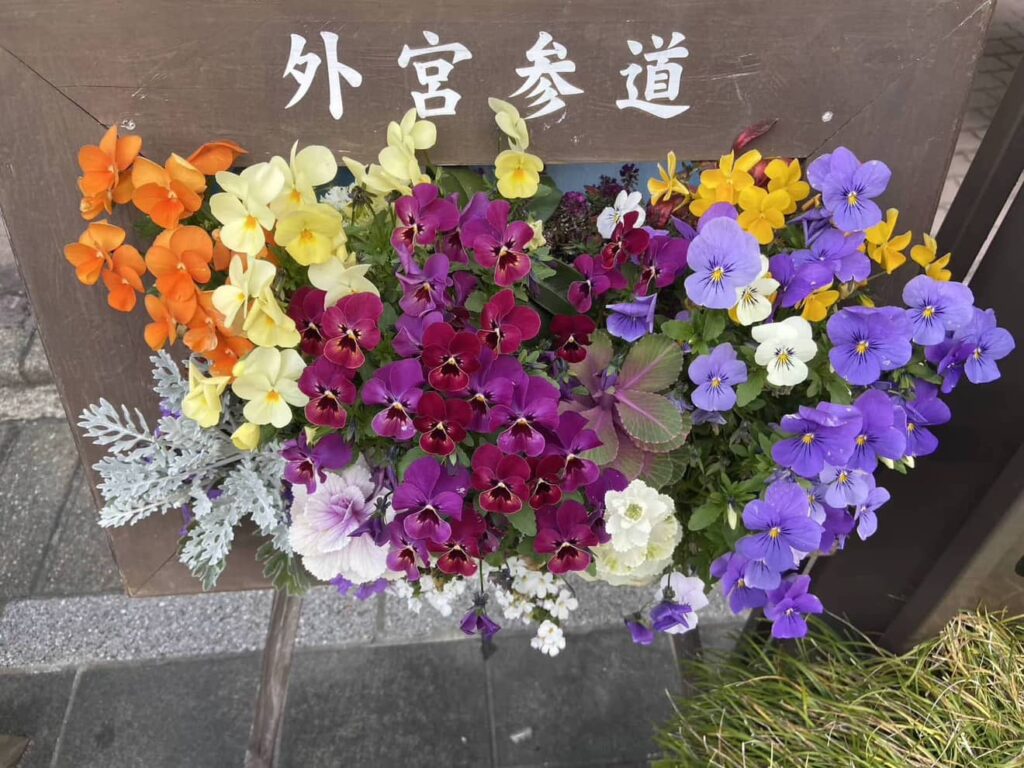
After checking out at the Ryokan (a traditional Japanese inn), I went to a nearby bus stop.
While I was waiting for the bus, I was completely drawn in by a poster I saw.
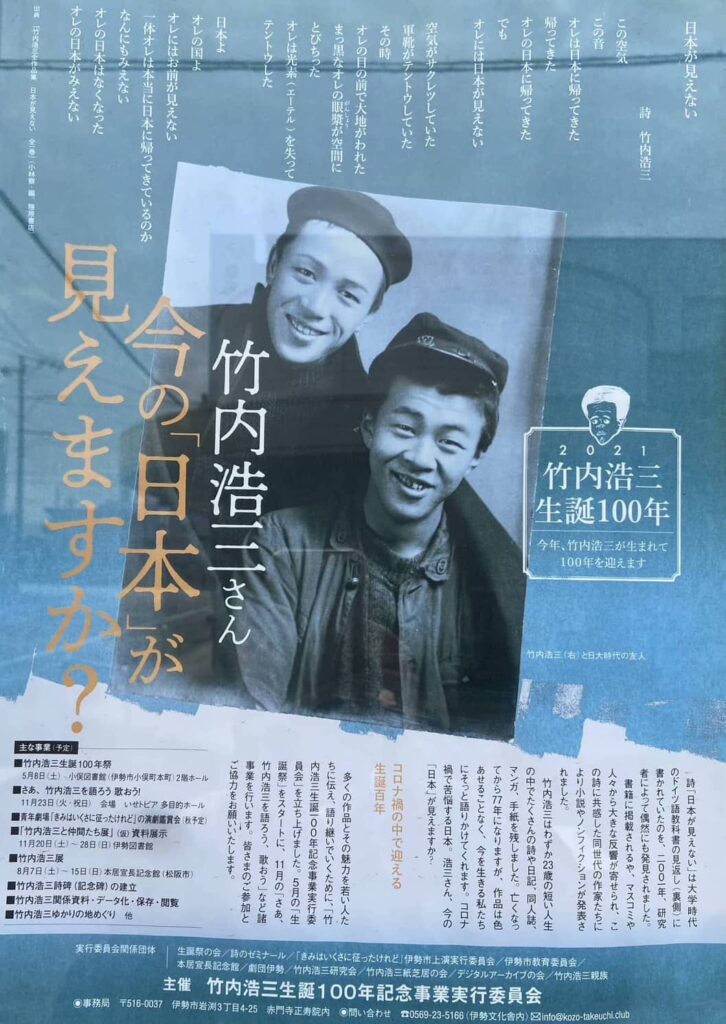
I can’t see Japan, poem by Kozo Takeuchi
This air
This sound
I’m back in Japan
This sound
This sound I came back to Japan
I’m back
I came back to my Japan
But
I can’t see Japan
The air was Sakuretsu (bursting)
My boots were on the ground
And then
The earth cracked before my eyes
My black gleam flew into the space
I lost my light element
I lost my ether
And went into a state of shock.
Japan!
My country
I can’t see you.
Am I really back in Japan?
I can’t see anything
My Japan is gone
I can’t see my Japan
Source: “The Complete Works of Kozo Takeuchi: Japan Unseen, Volume 1” (edited by Sasa Kobayashi, Fujiwara Shoten)
The poem “I Cannot See Japan” was accidentally discovered by a researcher in 2001, written on the back of a German language textbook he had used in college.
When it was published in a book, it received a tremendous response from both the press and the public. Writers of the same generation who resonated with the poem published it as both a novel and nonfiction.
In his brief life of only 23 years, Kozo Takeuchi left behind a wealth of poems, diaries, fanzines, manga, and letters. 77 years after his passing, his works remain vibrant and continue to resonate with those of us living today. In the midst of Japan’s struggle with the COVID-19 pandemic, one wonders if Kozo could perceive the ‘Japan’ of today.
Kozo Takeuchi 1921-1945
Born in Takeuchi Drapery Shop in Fukiage-cho, Ujiyamada City (now Ise City). He entered the film department of Nihon University College of Art to pursue a career in film, but was killed in action in the Philippines at the young age of 23. His poems and other writings left behind are still read by many people.
I believe that every age in which human beings live harbors its own challenges. During Mr. Kozo Takeuchi’s era, it was marked by war. However, it would be naive to assume that a time without war would equate to a utopia. While I haven’t experienced war personally, I acknowledge this reality.
It is only the degree of madness that differs from era to era. However, I think it is safe to say that it is unlikely that a person will always live a peaceful life in his or her lifetime. Perhaps that is what life is like on a global, national, and individual level.
How should each of us live our lives in such a situation?
This leads us to the Ise Jingu Shrine.
Ise Jingu is the highest-ranking shrine above all the shrines in Japan and is the general deity of the Japanese people. Kotaijingu(Naiku) enshrines Amaterasu-Omikami, the ancestor of the Imperial Family. (I did not visit the Kaiku this time.) The ancestor of the Imperial Family is Amaterasu-Omikami, and Ise Jingu is the spiritual home of the Japanese people.
If this is so, then the hearts of all people are attributed to the symbolic presence of Amaterasu-Omikami. Each and every one of us can be described as a sun god.
And I feel that the opening of Amano-Iwato is something that each one of us, the children of Amaterasu-Omikami must do.